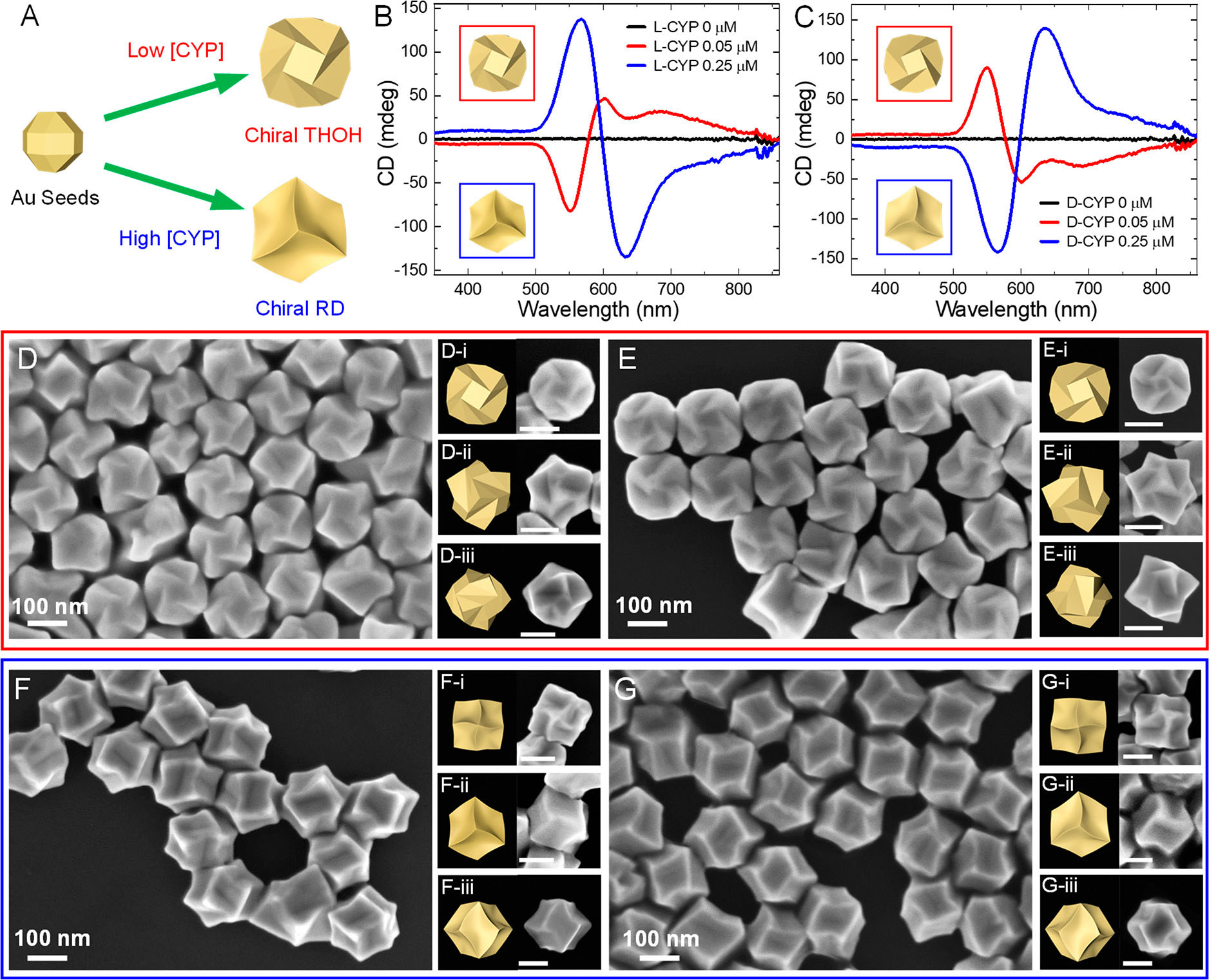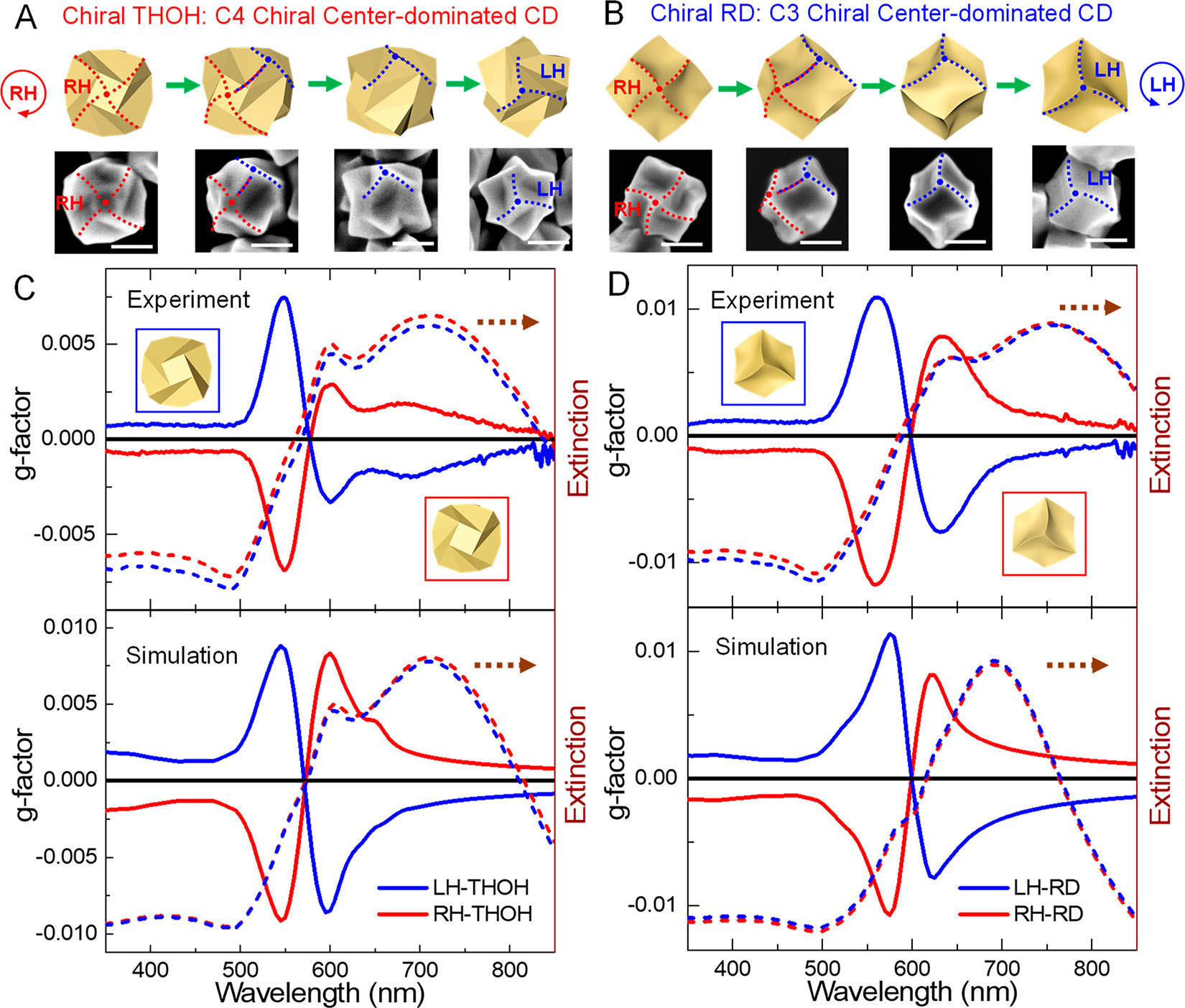| Oct 18, 2022 | |
Bichiral nanoparticles: A new structural design for manipulating the spin state of light |
|
| (Nanowerk Spotlight) Scientists from the College of Chemistry and Molecular Sciences at Wuhan University reported a novel class of chiral materials called bichiral nanoparticles that can easily tune the sign of circular dichroism (CD) through the hybridization of bichiral centers without inverting the geometric chirality. | |
| This work was recently published in ACS Nano ("Tunable Reversal of Circular Dichroism in the Seed-Mediated Growth of Bichiral Plasmonic Nanoparticles"). | |
| Artificially engineered chiral materials with exceptional light-manipulating capabilities show significantly enhanced chiroptical response and capability of light manipulation, which have emerged as a promising chiral platform for applications in biosensing, catalysis, and photonics. | |
| CD spectroscopy is frequently used to characterize structural chirality by measuring the differential extinction of opposite circularly polarized light. Tuning the sign of CD is a distinct spectroscopic signature and has promising applications in chiral biosensing, optical communication, and optical switches. | |
 |
|
| Figure 1. Signal reversal of Circular Dichroism mediated by the handedness and concentration of Cysteine-phenylalanine. (Image reprinted with permission by American Chemical Society) | |
| Typically, the signal reversal of CD can be only achieved by inverting the geometric chirality of chiral nanoparticles with helix structures. The limitation of this strategy lies in two aspects. | |
| First, the geometric chirality of chiral nanoparticles can be inverted by changing the handedness of chiral molecules, which takes significantly more effort when molecules with both handednesses are needed. Second, controlling the CD reversal in real-time becomes impossible because the left-handed (LH) and right-handed (RH) chiral structures are separated. | |
| Surprisingly, Prof. Qingfeng Zhang’s group observed the signal of CD can be reversed when they controlled the growth of bichiral nanoparticles during a seed-mediated chiral growth method (Figure 1). | |
| More interestingly, the researchers found that the transition between two different distinct chiral structures leads to the signal reversal of CD. LH and RH chiral centers on individual three-dimensional nanoparticles were found to be intertwined, hybridized, and ready to be tuned during the growth process to dominate the CD spectra (Figure 2). | |
 |
|
| Figure 2. Experimental and theoretical results demonstrated the signal reversal of Circular Dichroism is due to the formation of a structure with bichiral centers. (Image reprinted with permission by American Chemical Society) | |
| The team also found that the structure of chiral molecules and the crystal structure of Au seed play important roles in the formation and evolution of bichiral gold nanoparticles with propeller geometry. | |
| Bichiral plasmonic nanoparticles with propeller geometry represent a new class of chiral structure with tunable signal reversal of CD and could provide a paradigm to investigate interesting chiroptical properties and potential applications in the manipulation of the spin states of light. | |
| Provided by the College of Chemistry and Molecular Sciences at Wuhan University of Technology, as a Nanowerk exclusive. | |
|
Become a Spotlight guest author! Join our large and growing group of guest contributors. Have you just published a scientific paper or have other exciting developments to share with the nanotechnology community? Here is how to publish on nanowerk.com. |
|
